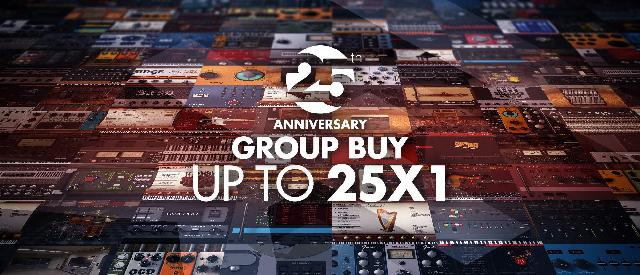
- #IK MULTIMEDIA PRODUCT REGISTRATION SERIES HARDWARE FORMAT#
- #IK MULTIMEDIA PRODUCT REGISTRATION FREE FOR OTHER#
IK Product Manager Product Registration FAQ Forum Warranty Contact Support IK. About us Jobs In The Media Press Releases Press Resources Contact Us NEWS. IK Multimedia Production srl - Via dellIndustria, 46 - 41122 Modena, Italy - Phone. NOTICE OF APPROVAL OF EXTENSION REQUEST MAILEDALLOWED PRINCIPAL REGISTER - SOU ACCEPTEDNOTICE OF ACCEPTANCE OF STATEMENT OF USE E-MAILEDCASE ASSIGNED TO POST REGISTRATION PARALEGALCOURTESY REMINDER - SEC. 8 (6-YR) E-MAILEDREGISTERED - SEC.
Ik Multimedia Product Registration Free For Other
As the stock of virtual equipment in T‑Racks mounted up, engineers began using it not only as a mastering suite, but to process individual tracks at mixdown. This has been continually improved over the years and now provides an exhaustive compilation of classic hardware emulations, advanced digital processors such as the excellent Stealth Limiter, and much more. As well as leaving the rest of your plug‑in slots free for other effects, this approach permits an entire processing chain to be saved and shared as a single plug‑in preset, and it allows the vendor to implement routing features that might not be possible within the host DAW.IK Multimedia were early and enthusiastic adopters of this concept, initially with their T‑Racks mastering suite. Within these environments, the user can arrange multiple modules to form a complete processing chain. IK’s latest modular processing suite brings a whole new meaning to the idea of ‘mixing in the box’.Insert slots in your DAW are usually used to host individual effects, but some manufacturers have also developed plug‑ins that are hosts in their own right.
MixBox is available in all the usual plug‑in formats, but also as a standalone application offering up to eight simultaneous processing chains for use in a live‑sound environment.IK’s business model for both T‑Racks and Amplitube includes something they call the Custom Shop, where the basic host plug‑in is free, but you pay to populate it with the modules of your choice. This one, as the name suggests, is very much targeted towards mix engineers — but not just in the studio. Opening The BoxMore than 20 years after the launch of T‑Racks, IK have now introduced a third modular environment. Once again, a single plug‑in provides both a wealth of processing modules, mimicking everything from Marshall heads to vintage fuzzboxes, and the freedom to connect them in interesting ways.
Ik Multimedia Product Registration Series Hardware Format
IK supply a generous collection of presets for both the plug‑in as a whole and for each of its modules.Signal flows from left to right, and modules can be reordered simply by clicking and dragging. Two further buttons display per‑slot wet/dry faders and preset load/save fields naturally, it’s also possible to load and save global presets. These are flanked by global input and output level controls, and it’s also possible to flip the virtual rack around, whereupon the back of each module presents a fader and a solo button. Its freely resizeable user interface presents a row of either four or eight vertical slots, complete with skeuomorphic details such as cables and mounting holes. MixBox is installed and authorised using IK’s new Product Manager utility, a process which I found painless on my Mac.Conceptually and visually, MixBox mimics API’s popular 500‑series hardware format.
Straight To The PointThe 70 processing modules included with MixBox are distributed among 10 categories, labelled Amps, Channel Strip, Delay, Distortion, Dynamics, EQ, Filter, Modulation, Reverb and Saturation. Inter‑module level metering is minimal and MixBox doesn’t report gain reduction to DAW hosts that can display it, such as Pro Tools. There are no virtual patch cables, nor any utility modules such as M‑S matrices, signal splitters, panners and so on. What you don’t get, however, is any internal routing flexibility.
To bring its output down to a sensible level, you have to flip the MixBox rack and use the ‘rear’ fader, which gets old fast.IK might argue that that’s what the rear fader is for, but in that case I’d ask them, first of all, why bypassing the module doesn’t also bypass the fader, and second, why they haven’t implemented this approach consistently with regard to either make‑up gain or wet/dry balance. The most frustrating example is a module just named Compressor, which sounds great, but does not have either a threshold or an output level control. In a few cases, though, this streamlining actually makes the modules hard to use or less versatile. Take, say, the Cabinet module from the Amps category: the complex virtual miking available in Amplitube’s cabinet section has been boiled down into three binary choices, which is plenty for most applications, and is a lot quicker to set up. In principle, that’s fine with me, as I’m a big fan of IK’s existing plug‑ins, but it should be pointed out that adapting these processors into MixBox form has meant streamlining their feature sets.In many cases that’s fair enough, and sometimes even a positive.


Most are based on classic hardware units such as the Boss CE‑1 or Electro‑Harmonix Small Stone, they cover all the bases, and they sound excellent. Finally, I can’t move on without commending the array of modulation modules. If you’re only an occasional user of amp simulations you might find that MixBox gives you all you ever need, and even if you’re an avid exploiter of virtual guitar technology, it’s bound to bring something new to your setup. I particularly liked the ‘Vocal Booth’ impulse response found in the Convo Room module, which is great for that dead, thumpy drum sound.The guitar amps and related plug‑ins are as good as you’d expect from a company with IK’s long history in this area. The Reverb category is surprisingly comprehensive, and although the modules found within are much simpler than their ‘full fat’ plug‑in counterparts, they sound excellent and are genuinely useful.
As it is, apart from the per‑slot wet/dry faders and ability to save entire configurations as a preset, there’s not much that you can do with MixBox modules that you couldn’t do with insert slots in your DAW. These generally offer the sort of routing and splitting capabilities that are lacking from MixBox, too.Talking of which, whilst I recognise the advantages of simplicity, I do feel that the basic ability to split and recombine the signal path internally would have provided a stronger raison d’être for this plug‑in. There are also plug‑ins from the likes of DDMF, Nugen Audio and Blue Cat that can provide modular layouts into which your existing VST plug‑ins can be slotted, enabling you to build comparable racks with plug‑ins you already own. None of these can claim to match the total of 70 modules supplied with MixBox, and none feature guitar amps or related modules however, Slate’s system includes some high‑quality offerings from third‑party developers such as Liquidsonics and Audified. The most obvious antecedent is Slate Digital’s Virtual Mix Rack, whilst PSP’s InfiniStrip is a newer entrant into the market, and SoundToys offer an Effect Rack for chaining their own plug‑ins.


 0 kommentar(er)
0 kommentar(er)
